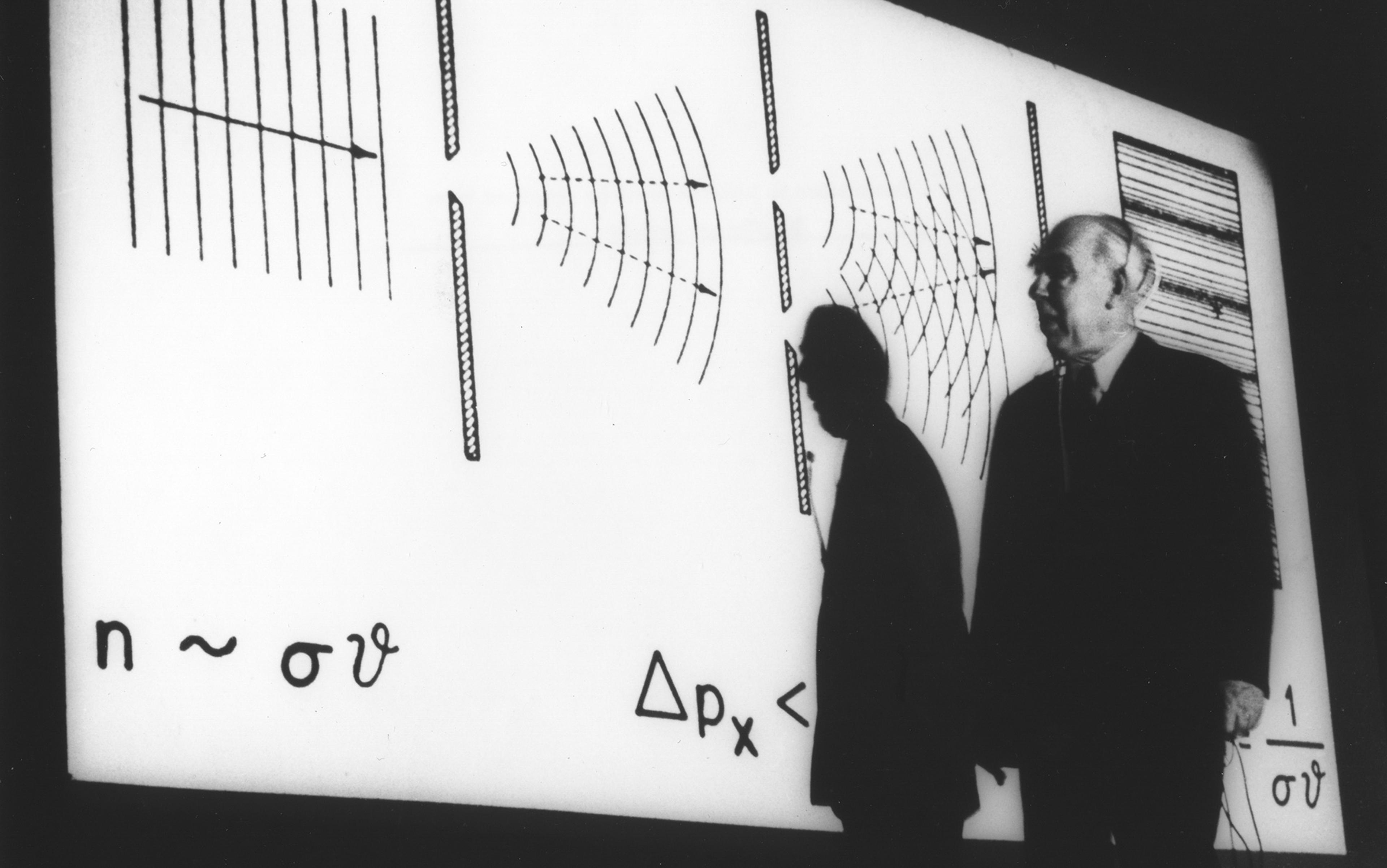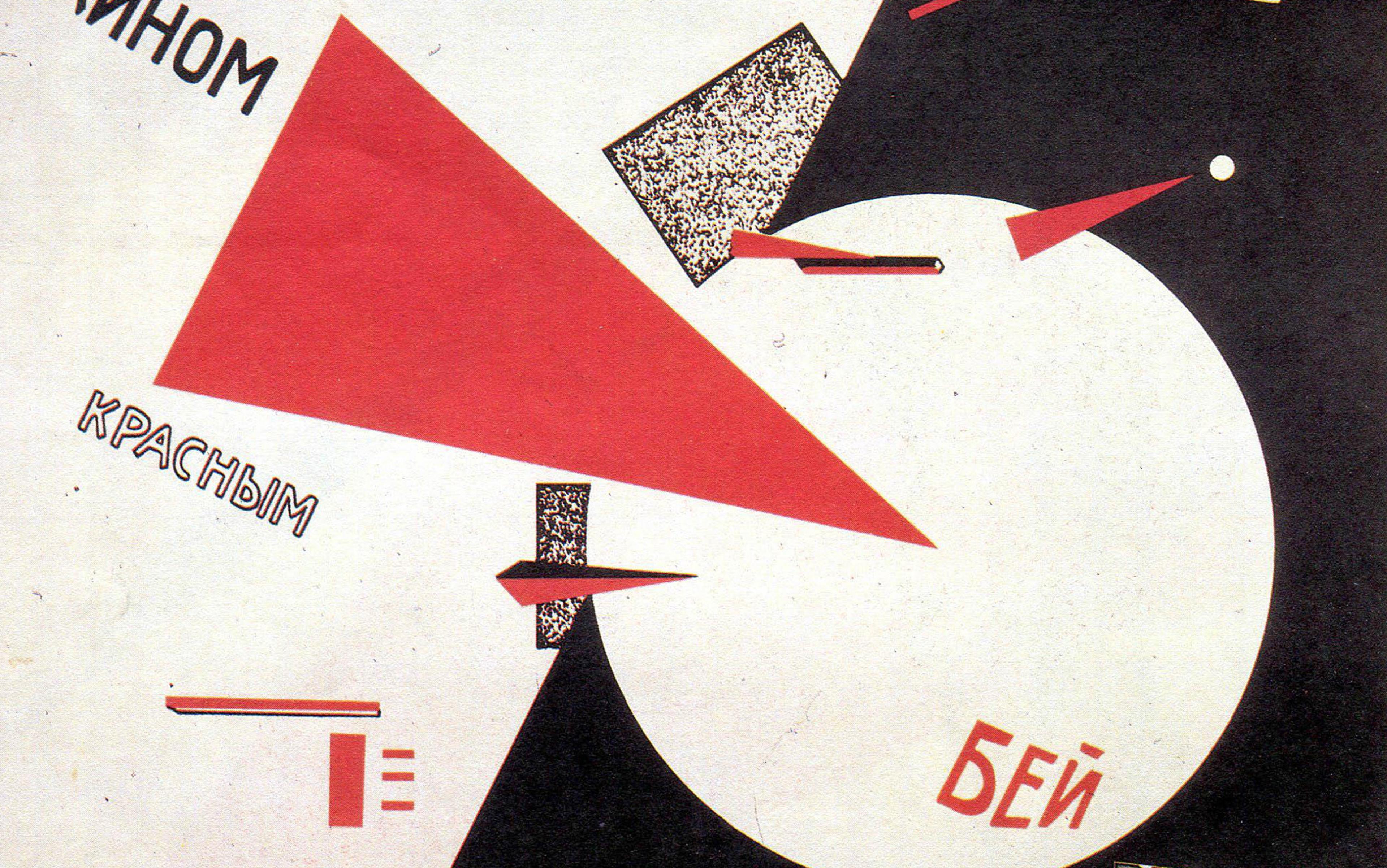In the early 1960s, quantum physics was regarded as one of the most successful theories of all time. It explained a wide range of phenomena to an unprecedented level of accuracy, from the structure of atoms and the formation of chemical bonds, to how lasers and superconductors worked. For some, it was more than just a theory, providing an all-encompassing framework for understanding the micro-world of elementary particles. However, it turned out that the very foundations of that entire framework were built on shaky ground – and the person who noticed wasn’t a physicist but an up-and-coming philosopher.
The debate that resulted not only opened the door to new ways of thinking about those foundations, but also had tucked away within it, overlooked by all the participants at the time, an entirely different philosophical perspective on quantum physics – one that can be traced back to the phenomenological philosopher Edmund Husserl. The impact of that shift in perspective is only now being fully appreciated, offering an entirely novel understanding of quantum mechanics, one that prompts a complete re-evaluation of the relationship between philosophy and science as a whole.
The philosopher who kick-started that debate was Hilary Putnam, who went on to make groundbreaking advances in philosophy of language and philosophy of mind, as well as in computer science, logic and mathematics. In 1961, he responded to a paper offering a resolution of the so-called Einstein-Podolsky-Rosen (EPR) paradox, which appeared to show that the description of reality offered by quantum mechanics could not be complete. In the course of his argument, Putnam pointed out that there was an even more profound problem that lay at the very heart of the theory, as it was standardly understood, and which had to do with one of the most basic of all scientific procedures: measurement.
That problem can be set out as follows. A crucial element in the formalism of quantum mechanics is a mathematical device known as the ‘wave function’. This is typically taken to represent the state of a given system – such as an atom or an electron – as a superposition of all its possible states. So, consider an electron and the property known as ‘spin’. (This is not really the same as the spin put on a ball in a game of baseball or cricket, but the name has stuck.) Spin comes in two forms, labelled ‘up’ and ‘down’, and so when we use the wave function to represent the spin state of our electron as it travels towards our detector, it is as a non-classical superposition of spin ‘up’ and spin ‘down’. However, when we come to measure that spin, the outcome is always one or the other, either ‘up’ or ‘down’, never a superposition of both. How can we account for the transition from that superposition to a definite outcome when we perform a measurement?
This question forms the basis of what came to be known as the ‘measurement problem’. One influential answer emerged from the mind of one of the greatest mathematicians of all time, János (or ‘John’) von Neumann, who was responsible for many important advances, not only in pure mathematics and physics but also in computer design and game theory. He pointed out that when our spin detector interacts with the electron, the state of that combined system of the detector + electron will also be described by quantum theory as a superposition of possible states. And so will the state of the even larger combined system of the observer’s eye and brain + the detector + electron. However far we extend this chain, anything physical that interacts with the system will be described by the theory as a superposition of all the possible states that combined system could occupy, and so the crucial question above will remain unanswered. Hence, von Neumann concluded, it had to be something non-physical that somehow generates the transition from a superposition to the definite state as recorded on the device and noted by the observer – namely, the observer’s consciousness. (It is this argument that is the source of much of the so-called New Age commentary on quantum mechanics about how reality must somehow be observer-dependent, and so on.)
What bothered Putnam was that if we accept von Neumann’s conclusion, then the theory could not be extended to apply to the entire Universe, because that would require an observer existing beyond the physical universe whose consciousness would collapse the superposition of all the Universe’s possible states into one definite one. Either physicists would have to give up the idea that quantum theory was universally applicable, or the standard account of measurement would have to be abandoned.
Putnam’s short paper, published in the journal Philosophy of Science, happened to be read by Henry Margenau, a former physicist turned philosopher of science, who then alerted the Nobel Prize-winning physicist Eugene Wigner. Together they published a response in which they defended von Neumann’s argument and dismissed Putnam’s concern. The debate then went back and forth over several years, the two sides essentially talking past each other until Abner Shimony decisively entered the fray. The holder of two PhDs, one each in philosophy and physics, and a former student of Wigner himself, Shimony subsequently went on to play a leading role in devising the experimental tests of Bell’s theorem (which builds on the EPR result by ruling out certain attempts to supplement quantum mechanics). He weighed in behind Putnam. The central concern was this: just how does consciousness effect this transition from a superposition to a definite state? With no satisfactory answer forthcoming, it appeared that Putnam and Shimony had won the day, clearing the philosophical ground for alternative approaches such as Hugh Everett’s Many-Worlds interpretation, according to which there is no such transition at all and each element of the superposition is realised as a definite outcome, albeit in a different branch of reality or alternative world.
That debate, as historically important as it was for the further development of the foundations of quantum mechanics, also contained a significant philosophical element that was completely overlooked for many years, and that not only offers an entirely novel response to Putnam and Shimony’s concern, but also opens the door to a fundamentally different understanding of quantum physics. What they didn’t notice was the phenomenological angle.
Rather than drawing on von Neumann’s chain argument as presented in his own text, which was quite technical and had only recently been translated into English, both sides in the debate actually cited core passages from what Wigner referred to as a ‘little book’ by two other physicists, Fritz London and Edmond Bauer. Originally published in French in 1939, La théorie de l’observation en mécanique quantique (The Theory of Observation in Quantum Mechanics) formed part of a series of semi-popular expositions of the latest advances in science and technology, covering everything from anthropology to zoology. At just 51 pages long, the pamphlet aimed to set out clearly and accessibly not only the basic framework of the quantum mechanical treatment of measurement, but the role of consciousness in that process. Regarded by both sides as a mere summary of von Neumann’s argument, it was anything but.
Both Bauer and London worked in Paris at the time, the former at the prestigious Collège de France and the latter at the Institut Henri Poincaré. Bauer was an excellent teacher and the first in France to teach the new quantum theory. London, however, was in a different league entirely. He earned his quantum mechanical spurs by showing how the theory could explain chemical bonding, leading his collaborator Walter Heitler to exclaim: ‘Now we can eat chemistry with a spoon!’ London went on to successfully apply the theory to superconductivity with his brother Heinz, and then used it to explain the superfluid behaviour of liquid helium, subsequently publishing a two-volume book on these phenomena that became a classic in the field.
However, London was not just a brilliant physicist. He was also keenly interested in philosophy from a young age. As a student at the University of Munich, he came to the attention of Alexander Pfänder, professor of philosophy and righthand man of Edmund Husserl, the founder of phenomenology. Indeed, London’s thesis on the nature of scientific theories was published in the leading phenomenological journal of the time, the Jahrbuch für Philosophie und Phänomenologische Forschung (the ‘Yearbook for Philosophy and Phenomenological Research’), which was edited by Pfänder himself. And this was no mere youthful fixation; London maintained his interest in phenomenology throughout his career. While in Paris, he had long discussions about physics and philosophy with his friend Aron Gurwitsch, who, like London, had an academic background in both subjects and went on to help establish phenomenology in the United States.
Not just the body of the observer but their consciousness is also correlated with the system under investigation
What is phenomenology? It can be summarised as a fundamental enquiry into the correlations between mental acts or experiences, the objects that these acts or experiences are about, and the contents or (where appropriate) meanings of these acts or experiences. Its primary tool is known as the epoché (from the Greek for ‘suspension’), which requires the phenomenological investigator to ‘bracket off’ the world around us, and suppress the ‘natural attitude’ that blithely takes that world to be objective. The idea is to break the hold that such an attitude has on us so that we may uncover the fundamental epistemological and metaphysical presuppositions underpinning it.
It is important to note that this bracketing off does not mean ‘denying the existence of’. Adopting this manoeuvre does not amount to an endorsement of scepticism, nor should it be understood as leading to solipsism. Instead, by using the epoché, we can hold up to scrutiny both the supposedly objective world and that natural attitude, thereby reorienting our understanding of both. What we then discover is that the relationship between our consciousness and the world should be understood as ‘correlative’, in the sense that both exist in a ‘mutually dependent context of being’, as Maximilian Beck put it in 1928. This is not to say that consciousness and the world should be conceived of as existing independently of one another prior to being related, nor that the former somehow creates the latter. Rather, it is the correlations that constitute both consciousness and the world.
There is a great deal more to phenomenology than this, and indeed not everyone agrees with the correlationist interpretation. But it is this view that underpins London and Bauer’s ‘little book’ on measurement in quantum mechanics, which played such a crucial role in the debate over the role of consciousness in that process. Recall that Margenau and Wigner defended the standard view that consciousness somehow produces a definite observation from a quantum superposition, taking London and Bauer to be simply summarising von Neumann’s argument. Putnam and Shimony, on the other hand, questioned that whole approach, pressing the point that it was unclear how consciousness could actually yield such a result. However, both sides in that debate missed the core point of the ‘little book’. London and Bauer actually went beyond von Neumann in adopting a phenomenological perspective on the issue, according to which consciousness plays a constitutive role via the correlation between the observer and the world. They themselves make it clear how they are departing from the standard approach in the introduction:
Without intending to set up a theory of knowledge, although they were guided by a rather questionable philosophy, physicists were so to speak trapped in spite of themselves into discovering that the formalism of quantum mechanics already implies a well-defined theory of the relation between the object and the observer, a relation quite different from that implicit in naive realism, which had seemed, until then, one of the indispensable foundation stones of every natural science.
What London and Bauer are saying here is that quantum mechanics must be understood as not just a theory like any other – that is, as about the world in some sense – but as a theory of knowledge in itself, insofar as it ‘implies a well-defined theory of the relation between the object and the observer’. This represents a crucial difference from classical physics as it is usually understood. From the perspective of quantum mechanics, the relationship between the observer and the object being observed must now be seen as quite different from that which underpins the previous stance of ‘naive realism’, which is typically adopted with regard to classical mechanics and which holds that objects exist entirely independently of all observation and possess measurable properties, whether these are actually measured or not. That view must now be abandoned. The core of London and Bauer’s text then represents an attempt to articulate the nature of that relationship between the observer and the object or system being measured.
London and Bauer radically depart from von Neumann’s argument at a crucial juncture. In setting out the chain of correlations, from detector + system to observer’s body + detector + system, they do not stop at the consciousness of the observer but also include this in the overall quantum superposition. It is this move that expresses in physical terms the phenomenological idea of the ‘mutually dependent context of being’, so that not just the body of the observer but their consciousness is also correlated, quantum mechanically, with the system under investigation.
How do we go from that correlation, manifested through the quantum superposition, to having a definite belief corresponding to our observation of a certain measurement outcome? Here, London and Bauer insist that
it is not a mysterious interaction between the apparatus and the object that produces a new [wave function] for the system during the measurement. It is only the consciousness of an ‘I’ who can separate himself from the former function … and, by virtue of his observation, set up [or, in the original French, ‘constituer’, constitute] a new objectivity in attributing to the object henceforward a new function.
In other words, the transition from a superposition to a definite state is not triggered in some mysterious fashion by the consciousness of the observer and, as a result, Putnam and Shimony’s concern regarding how consciousness can cause a definite state to be produced is simply sidestepped. Instead, what we have is a separation of consciousness from the superposition, leading to a ‘new objectivity’, that is, a definite belief on the part of the observer and a definite state attributed to the system.
How can the observer step outside her own perspective and into that of another?
This separation is effected, as London and Bauer explain, via
a characteristic and quite familiar faculty which we can call the ‘faculty of introspection’. [The observer] can keep track from moment to moment of his own state. By virtue of this ‘immanent knowledge’ he attributes to himself the right to create his own objectivity – that is, to cut the chain of statistical correlations.
And, in a typed note inserted by London in his own copy of the manuscript, he wrote:
Accordingly, we will label this creative action as ‘making objective’. By it the observer establishes his own framework of objectivity and acquires a new piece of information about the object in question.
It is this characteristic and familiar act of reflection that cuts the chain of statistical correlations expressed by quantum theory as a set of nested superpositions, and keeps the twin phenomenological poles of those correlations – namely consciousness and the world – mutually separate. And so, on the one hand, the system is objectified, or ‘made objective’, in the sense of having a definite state attributed to it, and, on the other, the observer acquires a definite belief state through this objectifying act of reflection.
London and Bauer were not unaware of the radical nature of what they were saying. In the final section of their work, they acknowledge that, as a result, it might appear that the idea of scientific objectivity itself was under threat. Indeed, this is a general problem with all such views that deny that states of systems are observer-independent – how can the observer step outside her own perspective and into that of another, and thereby establish what London and Bauer call a ‘community of scientific perception’ about what constitutes the object of the investigation? Their response is to insist that ‘one always has the right to neglect the effect on the apparatus of the “scrutiny” of the observer.’
To understand what they mean here, it is important to realise that the word ‘scrutiny’ in this quote is translated from ‘regard’ in the original French text, where the placing of this term between quote marks in the original text itself indicates its significance. Within phenomenology, this ‘regard-to’ is a fundamental reflective act, which, when directed to something, can be understood in terms of consciousness grasping or seizing upon it. When it comes to mental processes, their existence is, then, guaranteed by that ‘regard’. However, although physical objects are likewise brought within the purview of consciousness by the ‘regard’, their existence is not, of course, guaranteed by it (note that phenomenology does not amount to a form of solipsism).
So, when it comes to the measurement apparatus, operated by the physicist in the ‘natural attitude’, we can neglect the effect on it of this ‘regard-to’. And we can further justify our ‘right’ to do so by appeal to what is now known as quantum decoherence. Although there were indications of the core principle behind this as early as 1929, the framework was clearly set out in the early 1970s. The basic idea is that, when a system interacts with the measurement apparatus, the coherence associated with the superposition appears to be lost among the many more physical degrees of freedom offered by the apparatus compared with that of the system. As a result, even though this process does not, in itself, lead to a definite state, as the superposition is still present, the behaviour of the measurement apparatus may be regarded as classical to all intents and purposes. The ‘scrutiny’ or ‘regard’ of the observer can be ignored (unlike the case when we do consider the transition to a definite state) and a collective scientific perception achieved.
In a lecture given in 1925, shortly before the first papers on the new quantum mechanics appeared, Husserl made it clear that phenomenology needed to be brought down from the abstract heights of philosophical theorising and expressed in concrete terms, stating:
The task that now arises is how to make [the] correlation between constituting subjectivity and constituted objectivity intelligible, not just to prattle about it in empty generality but to clarify it in terms of all the categorial forms of worldliness, in accordance with the universal structures of the world itself.
A little more than 10 years later, in The Crisis of European Sciences and Transcendental Philosophy (1936), his final, magisterial, incomplete work, Husserl decried the way in which the mathematisation of ‘material nature’ had led to its conceptualisation as distinct from consciousness. In order for this split to be healed, he argued, there needed to be a fundamental shift back to ‘the universe of the subjective’ via the adoption of the phenomenological stance. Only then can the results of science in general, and physics in particular, be properly grasped and understood.
Merleau-Ponty argued that the observer should not be placed beyond the reach of the wave function
Unfortunately, Husserl died the year before London and Bauer’s ‘little book’ was published, but if he had read it he might have appreciated how they had, in effect, responded to both of his concerns. By couching the relationship between observer and system within a phenomenological framework, they clarified the correlation between constituting subjectivity and constituted objectivity in terms of that specific ‘categorial [form] of worldliness’ represented by quantum mechanics. Furthermore, London and Bauer showed that, by virtue of embodying that correlative relationship between ourselves and the world, quantum mechanics, conceived of phenomenologically, bridges the psychophysical divide and restores within physics, and indeed science as a whole, ‘the universe of the subjective’.
This restoration of the phenomenological nature of London and Bauer’s text – something that was entirely overlooked in the debate between Putnam and Shimony, on one side, and Margenau and Wigner, on the other – is therefore important firstly for illustrating how that particular philosophical movement was entwined with the development of quantum physics, and secondly for situating this ‘little book’ at an early stage in the evolution of a philosophical approach to that theory that has been largely ignored within the philosophy of physics, at least until recently.
This is not to say that other writers in the phenomenological tradition failed to bring quantum mechanics within their philosophical purview. Gurwitsch and Patrick Heelan also emphasised the phenomenological role of human consciousness in the measurement process, again citing London and Bauer. Maurice Merleau-Ponty, one of the most prominent phenomenological thinkers, similarly engaged with quantum theory while in Paris, and likewise argued that the observer should not be placed beyond the reach of the wave function, but must be included in the description of reality offered by physics. He went on to have a significant influence on subsequent writers, including Michel Bitbol who, together with his collaborators, has developed a form of eco-phenomenology that allies the phenomenological stance with an approach to quantum mechanics known as QBism. Initially developed by the physicist Christopher Fuchs, this similarly adopts a first-person approach that takes the concepts of agent and experience as fundamental, and understands the wave function as representing not the state of the system, but that of that agent when it comes to their possible future experiences.
Recent developments such as these have converged in a series of conferences, in turn resulting in two landmark collections, both edited and with useful introductions by Harald Wiltsche and Philipp Berghofer: Phenomenological Approaches to Physics (2020), which also covers phenomenological approaches to the theory of relativity, and Phenomenology and QBism (2024).
Within the phenomenological framework, then, one of the central problems of quantum mechanics is resolved or, perhaps better, dissolved, through a subtle but crucial shift to understanding it as a theory of knowledge by virtue of embodying our correlative participation in the world. Whether or not you fully agree with such a philosophical stance, it not only adds a hugely stimulating and potentially fruitful dimension to our understanding of one of the most fundamental constituents of modern physics, but also throws new light on the often-overlooked significance of philosophical reflection in these developments.






